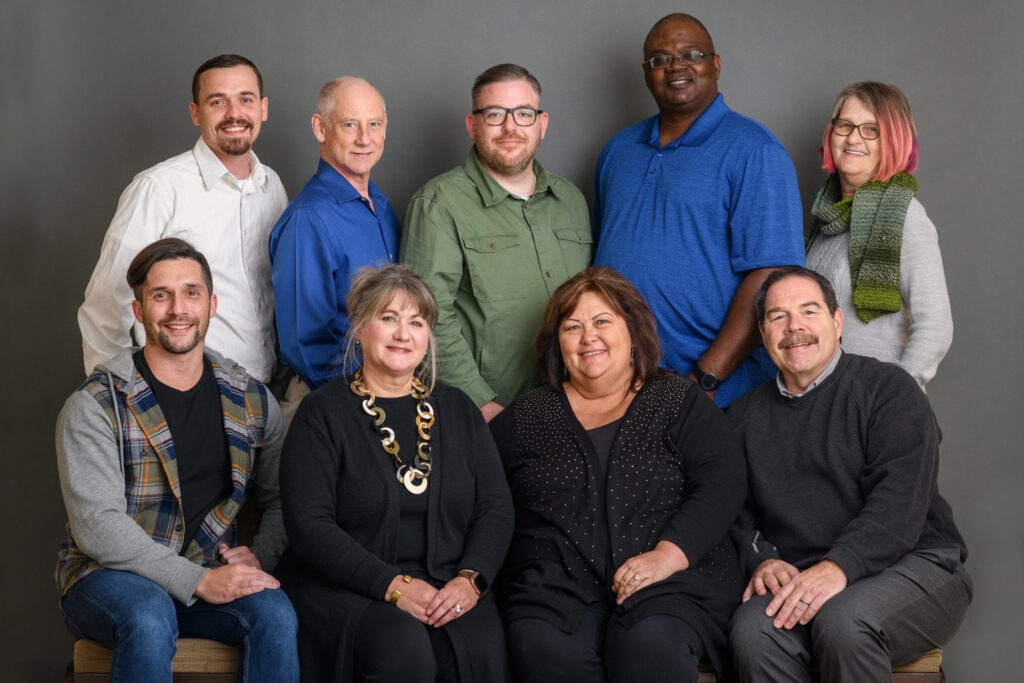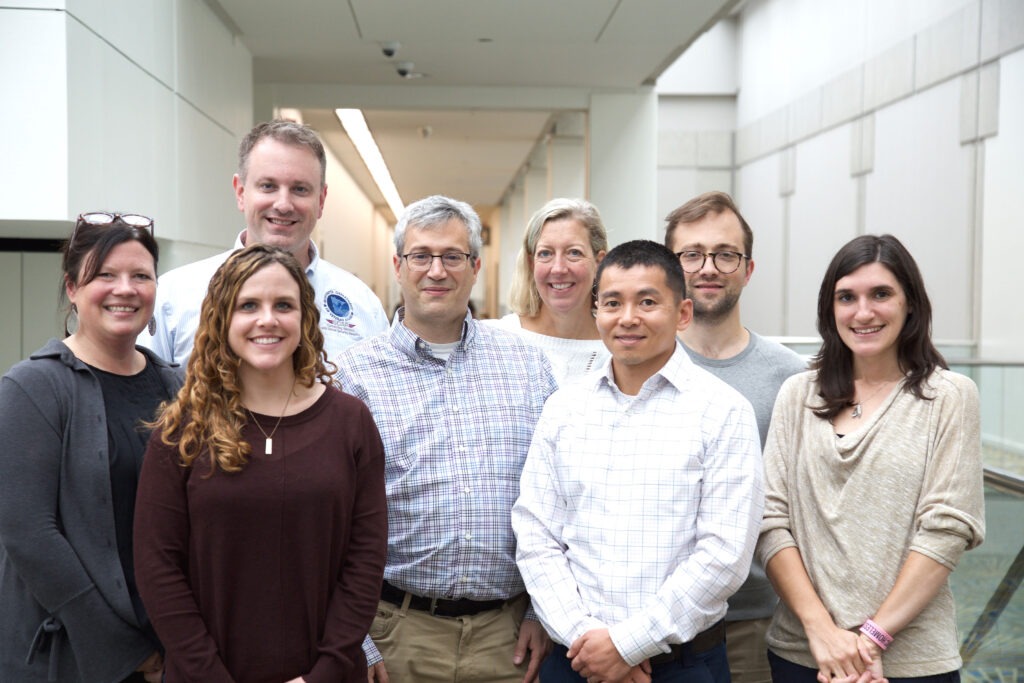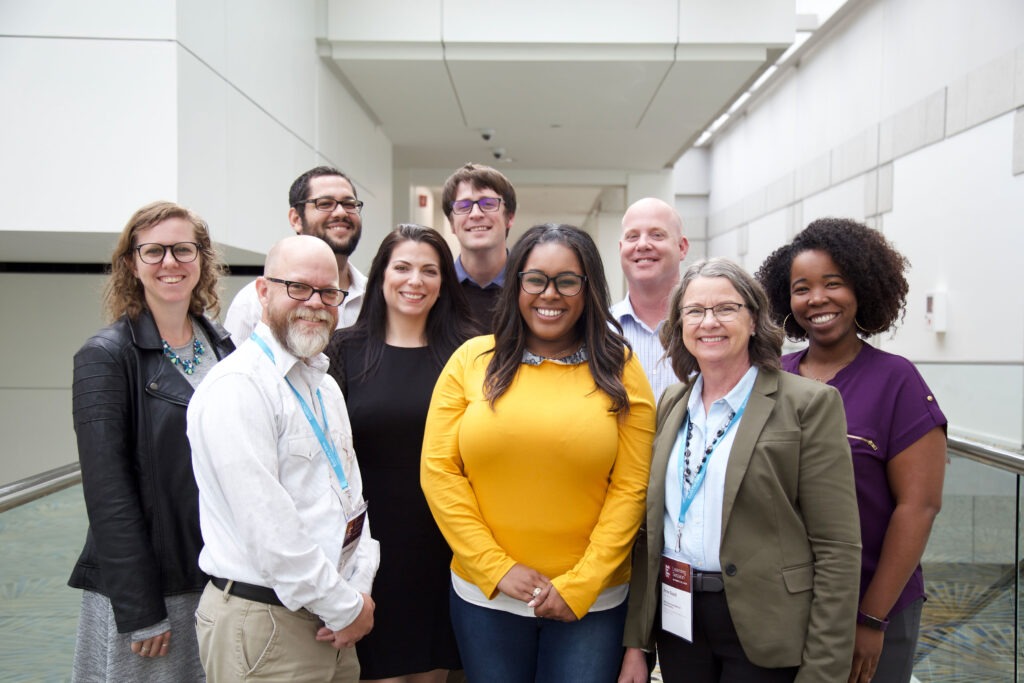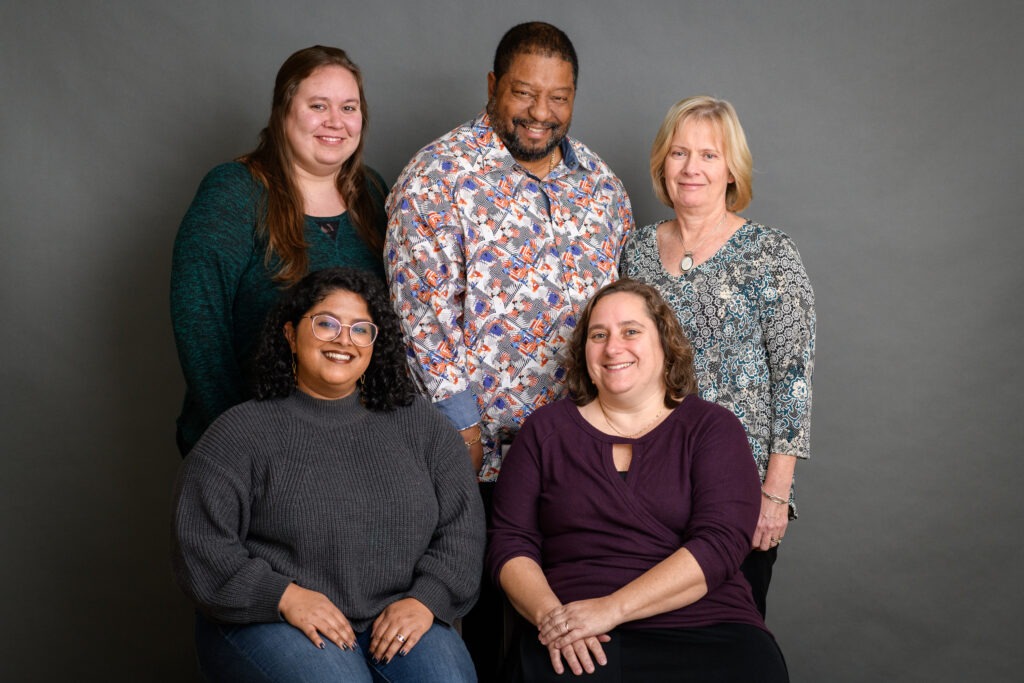Leadership structures to respond to the COVID-19 pandemic
April 15, 2020Examples from six communities on leadership and decision-making structures, coordination, and priorities
Responding to the COVID-19 pandemic has required new leadership structures in cities and counties across the country, including formally designated emergency operations that coordinate with the homeless response system. Six communities — five of which are participating in Built for Zero — shared the various decision-making structures that have formed, how they have coordinated their response, and key areas of focus for the teams.
Jacksonville/Duval County, Florida

Decision-making body
- A group of 12-15 people are responsible for the city’s isolation/shelter response
- A subset of that group works to determine what is needed from a homelessness perspective
Leadership team members
- The larger group includes:
- The executive director of the city/county CoC
- The executive director of one of their primary homeless service providers, which runs the largest shelter and is a federally qualified healthcare clinic
- A representative from the agency that runs Coordinated Intake and the PATH team
- Three additional service providers
- Three representatives from the city
- One representative from the main hospital system
- One representative from public health department
- One representative from the sheriff’s office
- The smaller group that surfaces what is needed, as it relates to homelessness, includes:
- The executive director of the city/county CoC
- The executive director of one of their primary homeless service providers, which runs the largest shelter and is a federally qualified healthcare clinic
- One representative from the agency that runs Coordinated Intake and the PATH team
- One representative from the mayor’s office who has been leading the city’s Homelessness Task Force
Coordination with government/public health response
The decision-making body includes representatives from the city and public health department, and the mayor’s office has been particularly engaged in the homelessness response. The group feels stronger, because they have a trusting relationship developed over a number of years of working together, have managed disagreements, and know how to respond to the strengths and limitations of their own internal system.
Other key teams/structures
The CoC Governance Board has begun meeting weekly to develop, refine, and oversee short-, medium-, and long-term planning needs.
Priority actions areas
- Community-wide protocol for COVID-19 screening in shelters
- De-intensifying shelters to achieve physical distancing
- Setting up isolation/quarantine locations
- Identifying and relocating highly vulnerable individuals and families to safe isolation housing
- Relocated all men with underlying conditions/higher risk out of men’s shelter to church camp
- Secured 40 rooms for people who are symptomatic, awaiting COVID-19 test/results, or are COVID-19 positive and medically stable and contracted for ambulance transport
- Acquiring funding to support these priorities
Facilitation
- The large group was meeting twice a week by conference call and will now begin meeting weekly by conference call.
- The CoC Governance Board, plus one representative from the Public Housing Authority and one representative from State Substance Abuse and Mental Health Services Administration, meets weekly using Zoom.
Communication
- Monthly and weekly newsletters have been repurposed for COVID-19 updates
- Conducted monthly membership meetings of CoC, but attendance has significantly increased (usually attended by 25-40 people; last week there were 91 participants)
- Started conference call with the grassroots ministry to make sure that people outside of the homelessness networks stay safe if they continue their work
Real-time data for decision-making
The team has added fields and programs to HMIS and their by-name list to continue existing frameworks for additional COVID-19 related purposes. They use the data to make determinations about who goes into shelter and who goes into isolation/quarantine sites.
Funding
Though they do not like moving money away from permanent housing for emergency shelter, this situation has called for it. Initial funding came from line items in existing budgets (CDBG for homeless, state budget line item, RRH) that could be used for this purpose. The biggest allocation is expected to come from the Emergency Solutions Grants program (ESG). Cities and counties will be accessing money through FEMA; CDBG, if they are a formulary; and Housing Opportunities for Persons With AIDS (HOPWA).
Madison/Dane County, Wisconsin
Decision-making body
- Core leadership team of seven
Leadership team members
- Coordinator of city/county CoC
- Three city staff (supervisors + homeless grants)
- Two county staff (homeless grants + procurement)
- One public health nurse
Coordination with government/public health response
- City and county staff both have seats on emergency operations center
- Public health nurse was assigned to homelessness and housing as part of COVID-19 crisis response
Priority action areas
- De-intensifying shelters to provide physical distancing
- Implemented social distancing in shelters, which included adding shelter space
- As of the week of 4/13/20, the community was updating protocols and screening tool for shelter/street outreach and healthcare providers to make referrals to medical respite center (the hotel housing people who are sick)
- Setting up isolation and quarantine locations in hotels, including medical respite center
- Relocated about 150 people into hotel rooms
Facilitation/communication
- The core leadership team meets nightly
- Team members email regularly to stay in touch regarding developments. The CoC maintains an email list where information is distributed regularly regarding program changes and updates. Additionally, the CoC Coordinator will send email updates regarding COVID-19 response as plans are secured.
- Team members have leadership roles in the following areas: emergency shelter, street outreach, housing providers. The leadership meets with staff in those areas on a regular basis to provide announcements, but mostly to hear what is happening on the ground.
- Homeless services providers ensure distribution of accurate information to people experiencing homelessness.
Funding
Funding was initially drawn from county reserves, and the community expects to access reimbursements.
Links:
Minneapolis/Hennepin County, Minnesota

Decision-making body/Team members
Minneapolis/Hennepin County CoC leadership is coordinating with the county, shelter providers, and the Department of Health Services.
Priority Action Areas
- Moving to preventative hotels seniors (age 60+) and those individuals who are highest priority at-risk, due to medical vulnerability as determined by the health care for the homeless (HCH) team
- De-intensifying shelters to meet the CDC recommendations for social distancing.
Coordinating with government/Public health response
- On March 17, 2020, the county board declared a continued local emergency related to COVID-19. The declaration of local emergency invokes Hennepin County’s disaster plans, along with the county’s powers to quickly provide emergency aid. The emergency will remain ongoing, due to the continued need for extraordinary and immediate measures to protect the health, safety, and welfare of Hennepin County residents and employees. It is not anticipated that these needs will be resolved in the immediate future.
- This declaration also authorizes up to $2.5 million to purchase and contract for all necessary goods, materials, supplies, equipment, and contracted services as part of Hennepin County’s COVID-19 response.
- All Hennepin County ordinances, rules, and policies that may inhibit or prevent prompt response to COVID-19 may be suspended for the duration of the local emergency if necessary.
- Hennepin Healthcare has expanded eligible groups who qualify for COVID-19 testing to include staff with respiratory symptoms who work at homeless shelters or homeless drop-in centers.
Agreement to provide quarantine and isolation spaces
- The board authorized up to $3 million to provide alternative quarantine and isolation spaces for people who depend on county services. This action will provide quarantine and isolation spaces for residents who cannot provide for this on their own. People who may need this accommodation include returning travelers, such as students studying abroad, or people experiencing homelessness. This action gives the county administration the authority to negotiate leases to provide these spaces through the end of 2020.
Communications
- Hennepin County is providing COVID-19 email updates to which people can subscribe.
- The county has hotline numbers for adults and families experiencing homelessness.
- For people experiencing homelessness and 211 service for after-hours shelter team access.
- A separate line is available for domestic abuse.
- The county has opened its main information line to people impacted by COVID-19. Resources available include help with clothing, financial assistance, grocery and household supplies, medical care and equipment, or medication, staffed from 8 a.m. to 8 p.m. daily. Help is available in several languages.
Link:
Phoenix/Maricopa County, Arizona

Decision-making body and coordination
- The county has set up a COVID-19 Unified Command Center with Rachel Milne, HSD Assistant Director for Housing and Community Development, as the point person for homeless activities. Rachel will coordinate with Public Health and other county departments.
- The CoC is coordinating with County Public Health. =
Other key teams/structures
Currently staff at the county and the Human Services Campus (HSC) have been working with Community Bridges, Inc (CBI), Circle the City, and others regarding screening protocols and isolation. Twelve handwashing stations have also been set up for use. For vulnerable populations, the county is working with shelter providers to create distance between beds and to move people over 60 or with underlying health conditions to other spaces.
For encampments, there is clear CDC guidance to not break up encampments if there are no single occupancy rooms available, but rather to create space between sleeping areas and deliver services to the encampment. CBI is currently doing outreach to the encampments to inform them about social distancing and hand washing. A more detailed strategy to address encampments and social distancing spacing is being developed.
Priority action areas
Maricopa County COVID-19 team focuses on identifying the gaps and problem solving. The county is working in three distinct areas for a regional systematic approach:
- Sites for recovery for the sick and symptomatic
- Sites to move the vulnerable shelter population (60+ and/or underlying health conditions) to prevent infection
- Management plan for encampments
For those that are sick and symptomatic, the team is looking for sites in the East Valley, West Valley, and centrally located. Sites may involve master leasing hotels with 100-150 beds, operationalized according to the following:
- Triage line to centrally track available rooms staffed by medical personnel to provide coordination and placement
- Outreach and shelter workers would be able to contact this line
- Transportation
- Vehicles with a barrier for the driver, ventilation for the client, disinfection and cleaning between rides
Facilitation
- The CoC Board meets Monday afternoons weekly
- Veterans workgroup meets Tuesday mornings weekly
- All veteran service providers, the VAMC, and PSH/RRH properties with large numbers of veterans meet daily at 8 a.m. to coordinate service provision of persons under investigation (PUI) and veterans with COVID-19. All homeless service providers are invited to participate in the daily call, to get information, and to raise challenges.
Communication
- The CoC has created a website to disperse information to providers and the public.
- The CoC is also sending weekly email updates in a newsletter that outlines the strategy in Maricopa Regional CoC.
- A Built for Zero leadership call occurs every Friday to provide system-level updates.
Real-time data for decision-making
The community has a COVID-19 assessment in HMIS; however, the VA Medical Center has been given guidance that they cannot disclose PUI (person under investigation) or symptomatic veterans to the community. The VA can only disclose positive veterans. The CoC also has the COVID-19 assessment listed as “optional,” so their current COVID-19 data is based on the willingness of providers to enter it into HMIS. All veteran service providers are still housing veterans off the by-name list and taking referrals that are given by the VA Community Resource and Referral Center (CRRC).
Funding
- Federal. The amount of federal funding each municipality will receive is not clear. The CoC believes Maricopa County will receive at least $20 million in federal allocations.
- Philanthropy. Phoenix will have a flexible pot of funding from philanthropic sources to assist with the response.
- State funding. As a result of the state COVID-19 response legislation, $5 million was entrusted to the Arizona Department of Housing (ADOH) to be distributed to homeless service providers. Requests fell into a few buckets:
- Supplies
- Staffing and operating funds
- Motel/hotel vouchers
- Materials needed for encampments (tents, handwashing stations, showers, etc.)
To leverage purchasing, the state will use $2 million for supplies for emergency shelters and street outreach. Once the supplies are received, the Arizona Department of Housing will ship the orders to four different staging areas and coordinate pick up by the requesting agency. Forty-one shelters around the state requested staffing and operating money. ADOH will begin with awards for two months of funding. After the first two months, ADOH will review for additional funding.
Other comments/resources
Maricopa Association of Governments is creating encampment maps and transmitting them to CBI along with HMIS client identification numbers to coordinate outreach and services to encampments. CBI is modifying one or more of their vehicles for the transport of clients with COVID-19.
Seattle/King County, Washington *
*(not currently a Built for Zero community)
Decision-making body/Team members
- A team of Public Health—Seattle & King County (PHSKC), Department of Community and Human Services (DCHS), Facilities Management Division (FMD), Office of Emergency Management (OEM), and METRO employees is working together alongside the city of Seattle and a network of partner providers.
- This team is operating 7 days a week to create a new network of facilities and services to slow the spread of COVID-19.
Three agencies are closely coordinating efforts for King County COVID-19 homeless response:
- Public Health-Seattle & King County (PHSKC) and its Healthcare for the Homeless Network (HCHN) and Environment Health Division
- King County through the Department of Community and Human Services (DCHS), Facilities Management Division (FMD), and METRO
- City of Seattle’s Human Services Department (HSD).
Other key teams/structures
- Homeless Health Field Assessment, Support and Technical (FAST) Teams are active now to provide onsite assessment, support, and technical assistance to homeless and supportive housing programs responding to COVID-19, including meeting sanitation and infection control guidelines, supply needs, and procedures for handling suspected cases. Teams may include a nurse, behavioral health specialist, environmental health specialist and/or an outreach worker. The team is providing proactive preventative support to providers.
- County-funded cleaning services clean high-traffic day centers to allow staff to focus on clients.
Focus areas
The goal is to contribute to the county-wide effort to slow the spread of COVID-19 and preserve hospital system capacity for people who need it.
- Support existing homeless services providers to maintain capacity and care for people experiencing homelessness.
- Support hygiene and sanitation efforts system-wide to prevent or slow the spread of the virus, including provider training and centralized supply purchasing and distribution.
- Create and implement a response plan to assist people who become sick with COVID-19 who cannot care for themselves in home settings, or who have no home.
- Site and staff facilities for quarantine, isolation, and recovery — for all who cannot care for themselves in home settings, including people experiencing homelessness, to slow the spread of illness in the community, and preserve hospital beds for the most acutely ill.
Priority actions
King County is creating temporary housing for those who cannot safely isolate and recover in their homes and for those who do not have homes. Examples could include travelers, symptomatic or COVID-19 positive people who cannot safely isolate away from a medically fragile or high-risk person (senior, immune-compromised child) in their home, or people experiencing homelessness. Public Health has been clear that isolation and quarantine help keep the community safe by containing illness.
- Reinforcing the existing shelter network. The purpose of this set of actions is to support existing institutions to implement public health guidance to prevent the transmission of COVID-19. This strategy focuses on preventing people from contracting COVID-19 in the first place.
- Creating a new isolation and quarantine system to operate for the next 18 months. Isolation and quarantine are public health-directed strategies to slow the spread of the virus. The purpose of this set of actions is to provide safe isolation/quarantine locations for county residents who cannot safely isolate or quarantine in their home, either because they do not have one or because they share their home with a vulnerable person.
- Creating an Emergency Congregate System of Assessment & Recover Centers (AC/RC) for the peaks of the outbreak. The purpose of this set of actions is to provide “surge” capacity for hospital diversion during the projected peak of an outbreak. This emergency strategy will provide congregate settings for larger groups of people to be assessed for COVID-19 and to receive nurse-level public health supervision for people who do not need — or who no longer need — hospital-level care.
Facilitation/Communication
- All staff working on the COVID-19 Homeless Response from Public Health—Seattle & King County, Department of Community and Human Services, and City of Seattle’s Human Services Department meet daily.
- Key system leaders in the homeless CoC participate in a call twice a week. Homeless response staff are assigned to roles and integrated in the PHSKC Health and Medical Area Command structure
- There is a centralized email address to push out updates, system meetings, guidance, and resources.
- In addition, there are several weekly calls set up with specific stakeholders:
- King County, City of Seattle, and PHSKC hosts a weekly conference call for up to 200+ shelter and homeless services providers, housing developers and owners, health care providers, city planners, coalitions, faith community members, and more. The most up-to-date information on the status of COVID-19 in the community is presented along with updated services guidelines, and participants have the opportunity to ask questions and voice needs.
- Weekly calls with outreach teams, including vehicle outreach, healthcare providers, and planners supporting unsheltered efforts.
- Weekly health care and behavioral health providers calls.
- Bi-weekly Q&A opportunities for providers to call in to ask program/agency specific questions about sanitation guidance, PPE use, behavioral health needs, etc.
Real-time data for decision-making
A countywide assessment of encampments, shelters, day centers, and housing programs was completed to identify gaps in its ability to respond and to ensure providers receive the resources and supplies needed. The county was already working to bring data up to real time and these efforts are accelerating during the crisis.
Funding
- Initial funding from county/city credit cards with expectation of reimbursement from varying sources of emergency response funds (keep record of all expenses/receipts).
- The first budget supplemental request approved by the Council for the emergency declaration included $15.8 million for four isolation and quarantine facilities.
- Appropriation for two additional sites will be included in a subsequent budget appropriation supplemental request.
Links/Resources:
- Action Steps: Supporting King County residents experiencing homelessness 3/25/20
- County-Wide COVID-19 Actions, as of 4/5/20
- COVID-19 Resources from Seattle & King County
- Frequently Asked Questions: COVID-19 Isolation, Quarantine, and Recovery Sites 3/24/20
Winston-Salem/Forsyth County, North Carolina

Decision-making body + coordination
The CoC, in partnership with the Forsyth County, Forsyth County Department of Social Services, Forsyth County Department of Public Health, and the City of Winston-Salem have developed a four-part plan to address the needs of people experiencing homelessness.
Priority action areas
The focus of this plan is to keep people experiencing homelessness as healthy as possible through education, enhancing screening and management of space at the emergency shelters, and options to shelter in place as well as isolation/quarantine. This plan includes:
- Opening, in partnership with Forsyth County, a shelter option for people experiencing homelessness who have been tested for COVID-19 or otherwise ordered to quarantine/isolate because of COVID-19.
- Opening, in partnership with the City of Winston-Salem, a shelter option for people who are medically fragile to have a 24/7 shelter-in-place option.
- Providing technical assistance to the mass shelters in order to enhance the program’s ability to implement CDC recommendations for managing mass shelters during the pandemic.
- Providing ongoing outreach, education, and hygiene stations to campers/people sleeping outside.
Communications
Weekly briefings of the progress on this plan can be found on the CoC website.
Real-time data for decision-making
- The proposed action plan includes having the CoC’s Community Intake Center (CIC), with technical assistance from the Public Health Department, develop and maintain a prioritized by-name list of individuals who have conditions listed by the CDC as high risk for COVID-19.
- This list will be used as the prioritization tool to determine who will be offered space in the Medically Fragile shelter.
- Data from HMIS has been utilized to develop specific projections for hotel rooms.
Funding
The COVID-19 Response Fund for Forsyth County was established by a partnership between United Way of Forsyth County, The Winston-Salem Foundation, the City of Winston-Salem, Forsyth County, and Community Organizations Active in Disaster to support local community members impacted by the novel coronavirus. Flexible resources will be provided for immediate, emerging, and long-term needs to organizations working with communities who are disproportionately impacted by coronavirus and the economic consequences of the outbreak. The fund is designed to complement the work of government and public health officials to address all aspects of the outbreak in Forsyth County. Individuals experiencing homelesseness have been identified as a priority group for this initial funding source.

